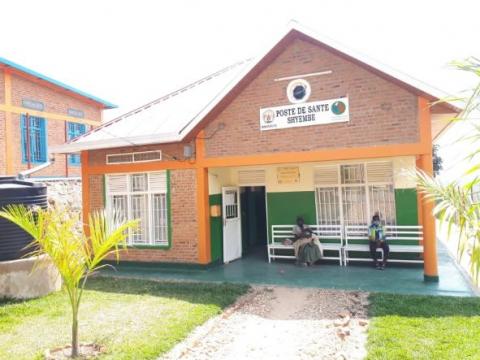Shyembe Health Post easing access to health services

Access to healthcare services was a huge challenge for the residents of Shyembe cell, Rutsiro district. The residents encountered many barriers to accessing timely essential primary health services. This was due to the long-distance to the nearest health centers, Congo Nil and Murunda health centers, and the waiting period before receiving services.
Marie Goreth 45, a mother of four children is one of the residents who struggled to access healthcare before the Shyembe health post was constructed.
“We would walk for five hours to go to Congo Nil health center and return home worn-out. At times we would walk to the health center and not get treated because of the huge crowd we would find. We would then be given painkillers and told to come back the following day,” she says.
Marie Goreth appreciates World Vision for constructing Shyembe health post, which provides quality healthcare services to her and many others in her community.
According to Celestin, a 49 year old father of four, this health post was an answered prayer especially for mothers who struggled to walk the long distance, while carrying children on their backs. He further mentioned that the number of deaths among children has reduced.
“Mothers would walk long distances carrying children on their back to the nearest health center, which was five hours away. Before establishment of Shyembe health facility, there were lots of deaths caused by malaria and pneumonia among children due to treatment delays. Lately, we receive prompt treatment as soon as we get symptoms of any disease,” says Celestin.
World Vision Rwanda constructed this health post in Shyembe cell, Gihango sector, Rutsiro district in 2019. Currently, the health post serves more than 10,000 people from Shyembe and neighboring communities. Between June 2020 and June 2021, Shyembe health post received more than15,000 patients for outpatient services. Twenty-five per cent of the patients were children under five years.